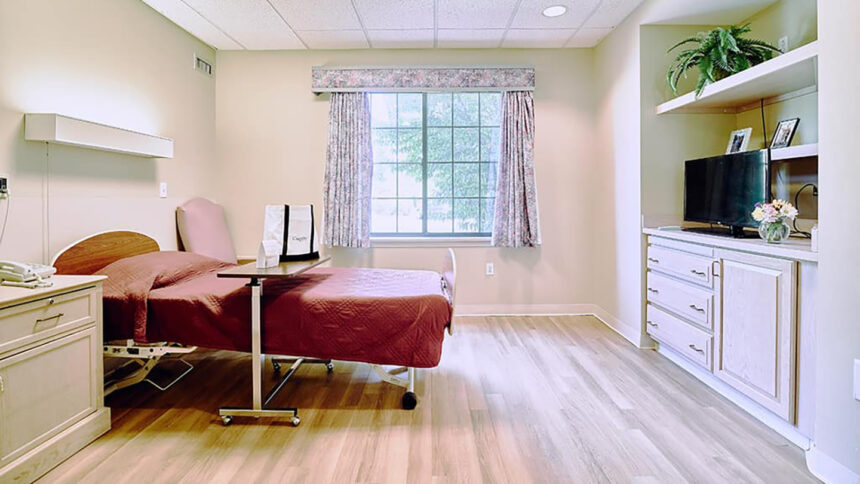
At the height of the pandemic, CareOne at Redstone was down 16 beds, an entire unit closed, as the facility, like so many others in the US, grappled with how to assign limited caregiving staff.
But by April 2022, the 213-bed sub-acute rehabilitation facility in western Massachusetts had created a new program to help hire and pay for additional staff, increase census and help one of its major hospital partners alleviate discharge bottlenecks. Through a partnership with Baystate Health, the facility has seen its census rebound from a pandemic low in the mid-70% range to an 88% average.
The key was an agreement that led Baystate Medical Center to share premium labor costs needed to get that 16-bed skilled nursing unit open again. The partnership also required CareOne to reserve those beds for short-term post-acute patients being discharged.
“If you think back to that time during COVID to occupancy across the state, most buildings were choosing to run a lower occupancy center because of staffing shortages across the board. You didn’t want to affect care,” said Luis Cunha, senior vice president of strategy and development for CareOne. “That created a definite clog in the system on the acute-care side.”
The fresh stream of referrals from Baystate increased Redstone’s patient admissions from 284 in 2021 to 473 in 2022. The facility, home to a pulmonary unit with specialists and respiratory therapists, was well-prepared for the kind of high-need patients the hospital had been having trouble discharging.
The nursing home simply needed more frontline staff to operate safely.
Cunha said the two provider organizations hammered out an agreement over months, but ultimately it was CareOne that recruited new direct care nurses. At the start, those were mostly contracted employees brought in for 16-week stints to help ensure care continuity.
But even as the hospital continues to cost-share with CareOne, those hits to the bottom line are moderating. Cunha said RedStone’s Baystate unit has been able to reduce its dependence on agency nurses and increase its permanent workforce.
In addition to the skilled nursing facility’s census gains, Baystate has reported fewer “delayed days” in the hospital and a shorter average length of stay.
Far-reaching positives
Cunha said improved communication and collaboration throughout the process also has increased referrals to other CareOne facilities from three additional Baystate hospitals, as well as improved care across the continuum through the use of case managers.
Hospital discharge delays, however, continue to be a major issue for other health systems in Massachusetts and in many states. According to the Massachusetts Health & Hospital Association, almost 15% of medical-surgical beds are being taken up by patients who no longer need acute care but have nowhere to go for follow-up.
On Monday, Tara Gregorio, president of the Massachusetts Senior Care Association, told McKnight’s Long-Term Care News that the state’s loss of 25 nursing homes since the start of the pandemic and major staffing shortages are major contributors.
Some patients are stuck for a month to six months waiting for post-acute placement.
CareOne has more than 70 facilities across multiple states. Cunha said leaders recently expanded the hospital-partnership approach with two other Massachusetts medical systems. One is helping to support a single dedicated unit, while the other has units in multiple CareOne buildings within its service area.
The company is also exploring expanding the concept to its New Jersey locations.
“We’ve been in these markets and working with these leaders for many, many years,” Cunha said. “Those trusted relationships have allowed us to say, ‘How can we take this a little further to make sure there’s value to both sides, not just us, not just the hospitals, but more importantly, the patients and communities we serve?’”



